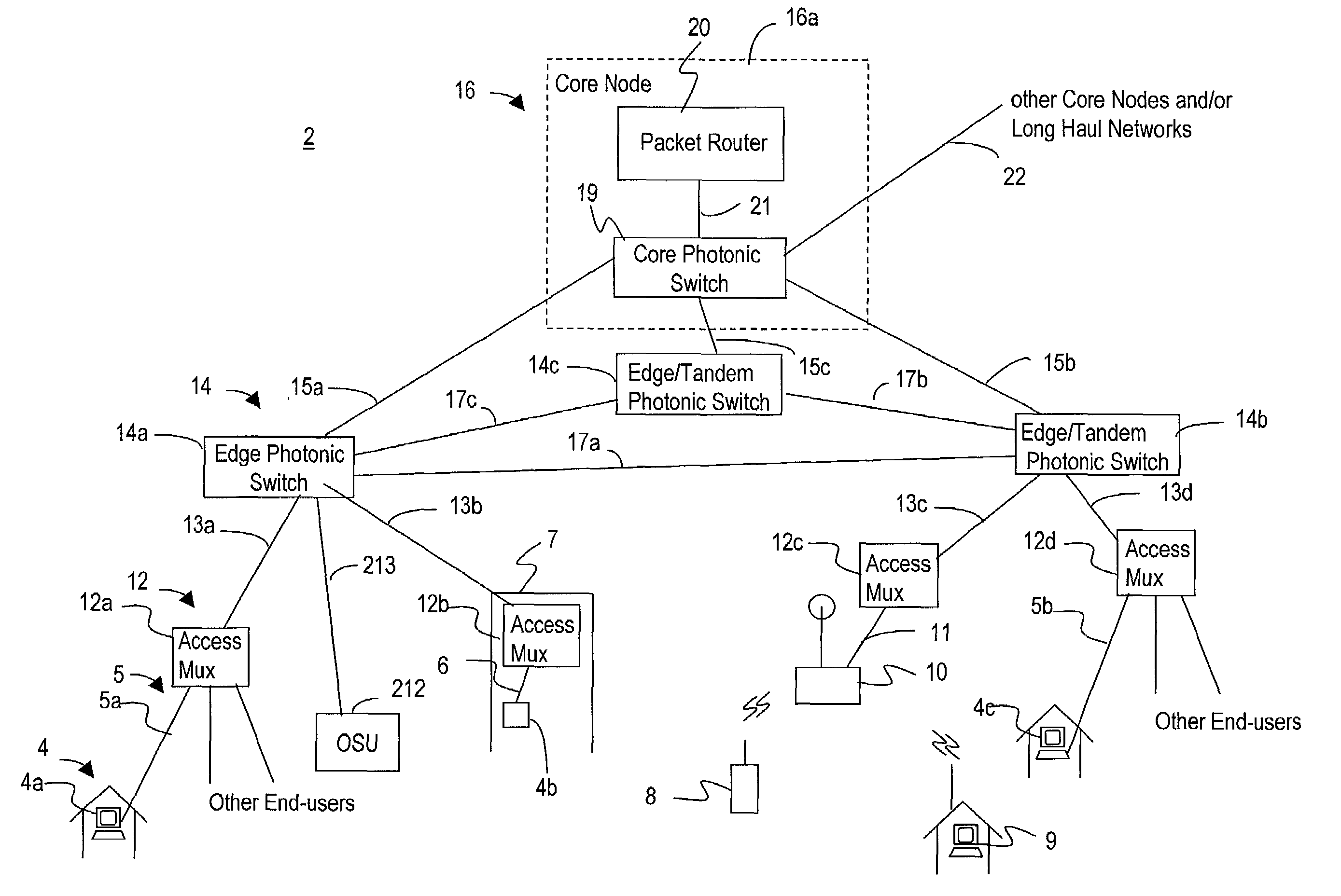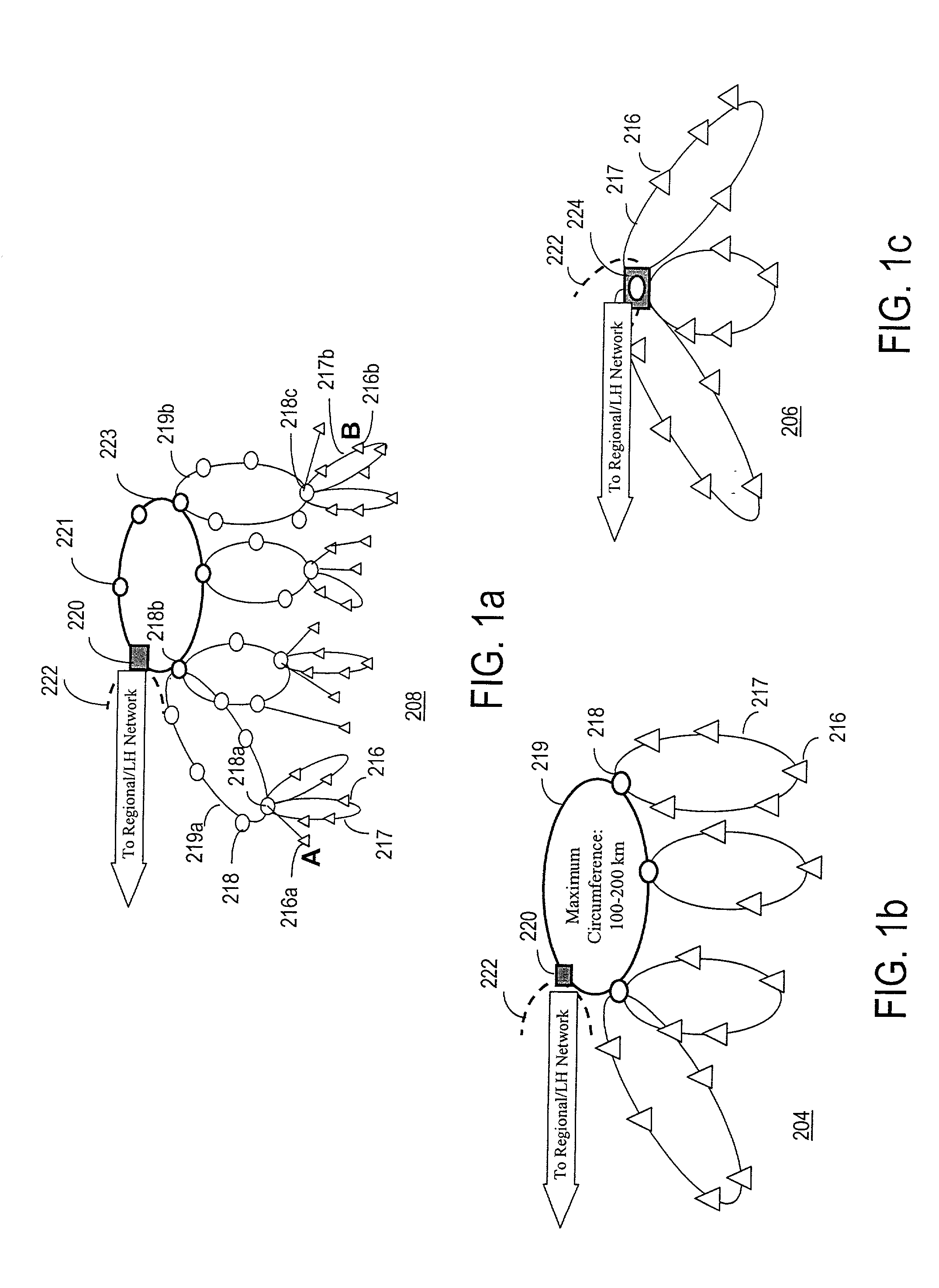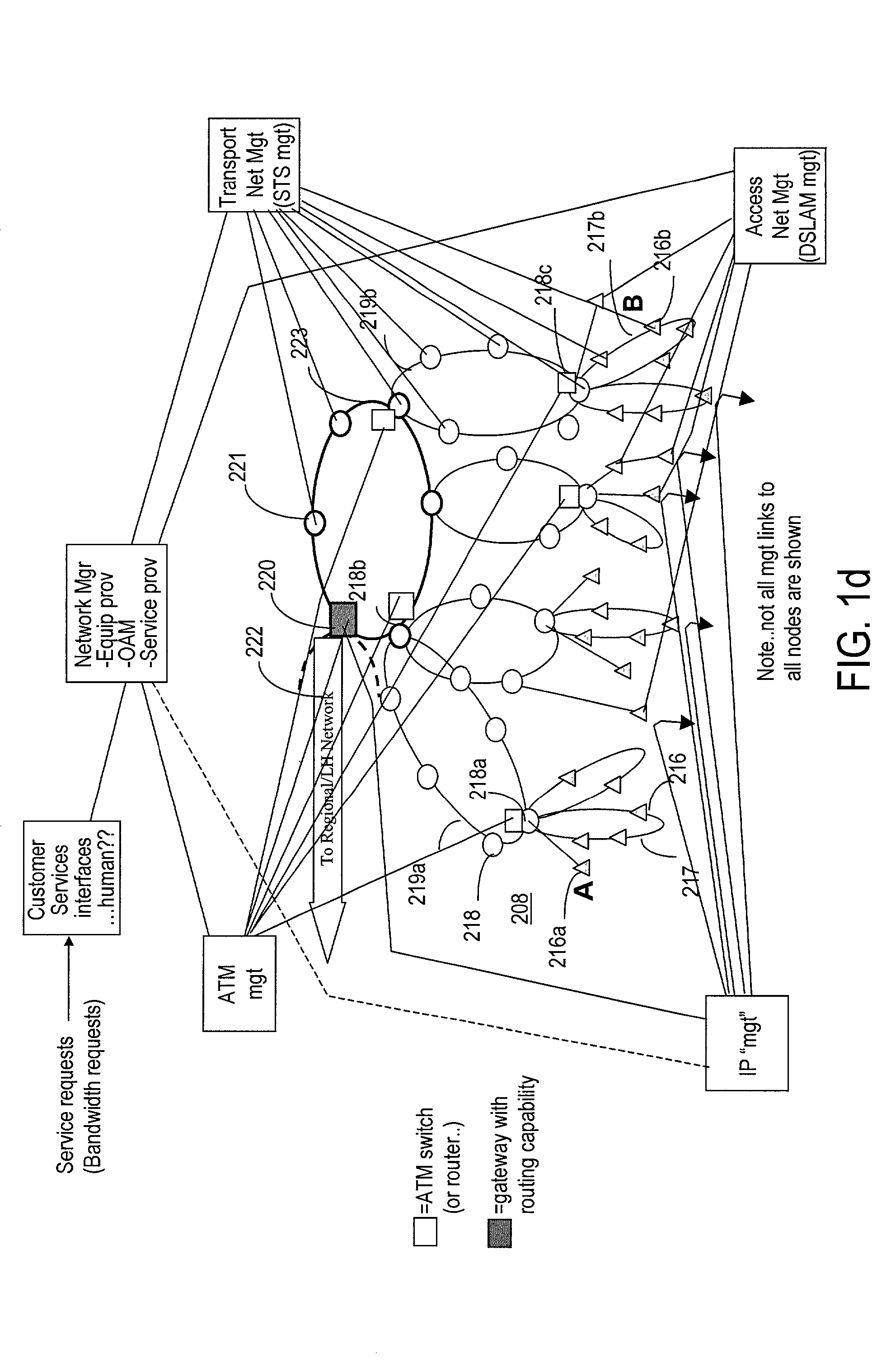Communications network for a metropolitan area
a technology for communication networks and metropolitan areas, applied in the field of communication networks, can solve the problems of inability to meet the needs of customers, etc., and achieve the effect of improving the communication network
- Summary
- Abstract
- Description
- Claims
- Application Information
AI Technical Summary
Benefits of technology
Problems solved by technology
Method used
Image
Examples
Embodiment Construction
[0092]Referring to FIG. 3, a communications network for a metropolitan area is comprised of three types of network nodes: an access multiplexer 12, an edge photonic switch 14, or edge / tandem photonic switch (since some of the optical carriers transitting a photonic switch may have come not from the local access but rather further out edge photonic switches), this switch also being also referred to herein as simply a photonic switch, and the core node or nodes 16. The access multiplexers 12 provide multiplexing of Ethernet packets from end-users 4 over their local loops 5, which carry 100 bT or 1 GE Ethernet fiber based multiplexed service connections or multi-service “VDSL-like” connections, and can act as the Ethernet mapping points for legacy services or connections, where these are capable of being carried in a high quality packet format, and maps all of these onto one or more Sparse-DWDM (S-DWDM) wavelengths, or a fiber. Sparse-DWDM is so-called because, although the carrier wav...
PUM
 Login to View More
Login to View More Abstract
Description
Claims
Application Information
 Login to View More
Login to View More - R&D
- Intellectual Property
- Life Sciences
- Materials
- Tech Scout
- Unparalleled Data Quality
- Higher Quality Content
- 60% Fewer Hallucinations
Browse by: Latest US Patents, China's latest patents, Technical Efficacy Thesaurus, Application Domain, Technology Topic, Popular Technical Reports.
© 2025 PatSnap. All rights reserved.Legal|Privacy policy|Modern Slavery Act Transparency Statement|Sitemap|About US| Contact US: help@patsnap.com



